Thinking Big: How UMCES can increase its capacity to produce actionable science that serves society
Suzanne Webster ·UMCES hosted an environmental summit on November 30, 2018, which marked the official inauguration of our new president, Dr. Peter Goodwin. The event attracted attendees from all UMCES campuses and several other institutions within the University System of Maryland, as well as from outside of the academic community.
The summit offered select faculty members and students the opportunity to share their ongoing research efforts and discuss how UMCES can continue to grow our capacity to produce science that "transforms the way society understands and manages the environment". During his inaugural lecture, President Goodwin encouraged each of us to think about where we can make a difference with our science, and urged us to "Think Big" when considering what kinds of questions we choose to work on and who we choose to partner with.
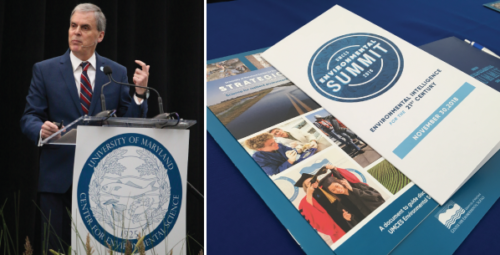
Before the start of the summit, I was asked to compile a brief summary, over the course of the day, of what I deemed to be the major themes that arose during the presentations and panel discussions. Dr. Goodwin invited one student from each of the five UMCES labs to join him on stage during his closing address and share our take-away messages for how we believe UMCES can move closer to achieving our shared vision of being "recognized internationally as a leader in environmental sustainability and as a diverse scientific community committed to understanding and solving major environmental challenges."
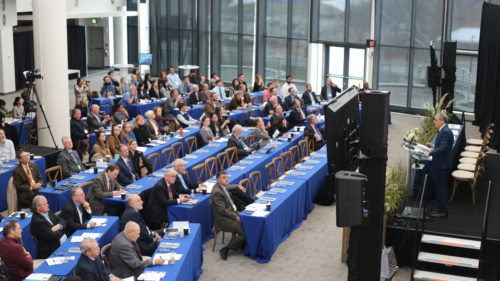
On the stage, I was given 1-2 minutes to summarize my thoughts; however, I will provide a more detailed synthesis here.
During the UMCES Environmental Summit, speakers repeated a call that both addresses Big Ideas and solves complex problems; however, UMCES currently has several institutional barriers, such as low diversity and a geographically dispersed campus, which slow convergence research efforts. Therefore, UMCES should invest in the following in order to support faculty and students in producing actionable science that serves society:
1. Build Diversity
During her presentation on overcoming the challenges of inclusivity and diversity in STEM, Dr. Renetta Tull asserted that the mosaic of diversity that constitutes our natural environment requires a corresponding mosaic of diversity in how we study it. Dr. Tull reminded us that "we have the entire world to consider" and an entire suite of environmental problems that can be solved using science. Throughout the day, several other speakers highlighted the importance of increasing diversity at UMCES. For UMCES, increasing diversity in several dimensions, including age, gender, racial and ethnic identity, nationality, and disciplinarity, will improve our ability (both as individuals and as a team) to think creatively, welcome new talent, and integrate multiple perspectives. Moving forward, UMCES should build diversity by employing underrepresented minorities at all levels (faculty, staff, student, etc.) and by employing scholars with different disciplinary expertise. Doing so will allow us to produce science that is inclusive, holistic, and consequently, more powerful for solving a broader swath environmental problems spanning "from the mountains to the sea."
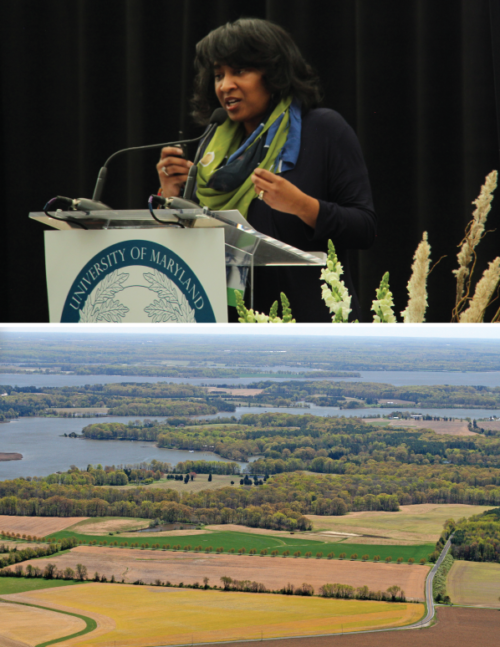
2. Nurture a "one-UMCES" identity
UMCES labs are spread across the state of Maryland. This arrangement simultaneously presents valuable opportunities and significant challenges. Each of the campuses has a unique culture and fulfills a different niche of ecological research topics and approaches. For example, Horn Point Lab has a particularly strong oyster biology and restoration faction, Appalachian Lab scientists more often focus on freshwater systems and landscapes, and the Integration and Application Network emphasizes science communication and stakeholder engagement. Although each of the labs is certainly impressive and productive on its own, UMCES can boast truly extraordinary levels of depth and breadth in its scholarly expertise when the entire institution is functioning as a whole. All together, UMCES is greater than the sum of its parts; however, sharing knowledge and other resources between labs is often difficult. Furthermore, as a result of working at small, in many cases remote, and consequently less diverse labs, many faculty and students experience feelings of isolation (e.g. "I am the only Latina" or, in my own experience, "I am the only social scientist"), which can be emotionally discouraging and harmful to productivity. UMCES should provide more deliberate and innovative support for inter-lab collaborations, and work on building institution-wide identity to make it easier to connect personally and professionally across campuses. Building stronger networks between campuses will alleviate feelings of solitude and help employees collaborate long-distance to conduct interdisciplinary convergence research.
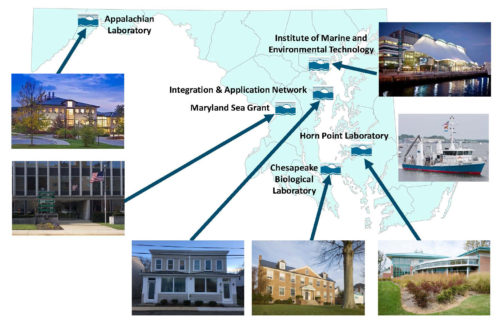
3. Support inter-institutional partnerships
Science can better serve society and contribute to action and management when it is relevant to communities and inclusive of many stakeholders. Beyond increasing collaboration between labs, UMCES should make efforts to partner with individuals and organizations outside of our own institution, and even more broadly, outside of academia. It is important for UMCES scientists to work with local communities in order to better understand non-academic perspectives regarding how environmental science can be used to impact peoples' lives. Science can be a powerful tool and public good, so scientists alone should not decide what types of scientific research questions are valuable and worth pursuing, or what types of environmental concerns are highest priority. Incorporating more perspectives and engaging more partners in the research process will make UMCES science more creative and holistic, and therefore better able to address increasingly complex environmental problems. In forming partnerships with stakeholders outside of academia, clear communication is key! UMCES should continue to invest time, energy, and money into science communication so that faculty and students can more effectively communicate and collaborate with non-academic stakeholders.
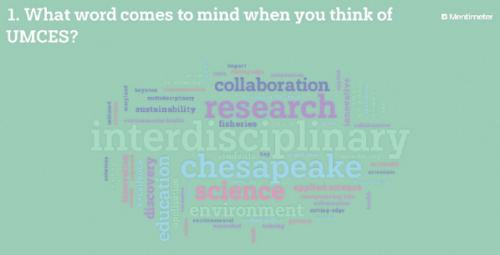
All in all, the UMCES Environmental Summit was a valuable opportunity to be self-reflexive as an institution, and to share ideas for how we can work together to achieve UMCES's shared vision in the near future. I am excited to see UMCES continue to grow and improve in the years to come!
About the author
Suzanne Webster
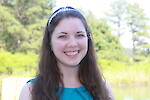
Suzi Webster is a PhD Candidate at UMCES. Suzi's dissertation research investigates stakeholder perspectives on how citizen science can contribute to scientific research that informs collaborative and innovative environmental management decisions. Her work provides evidence-based recommendations for expanded public engagement in environmental science and management in the Chesapeake Bay and beyond. Suzi is currently a Knauss Marine Policy Fellow, and she works in NOAA’s Technology Partnerships Office as their first Stakeholder Engagement and Communications Specialist.
Previously, Suzi worked as a Graduate Assistant at IAN for six years. During her time at IAN, she contributed to various communications products, led an effort to create a citizen science monitoring program, and assisted in developing and teaching a variety of graduate- and professional-level courses relating to environmental management, science communication, and interdisciplinary environmental research. Before joining IAN, Suzi worked as a research assistant at the Marine Biological Laboratory in Woods Hole, MA and received a B.S. in Biology and Anthropology from the University of Notre Dame.

